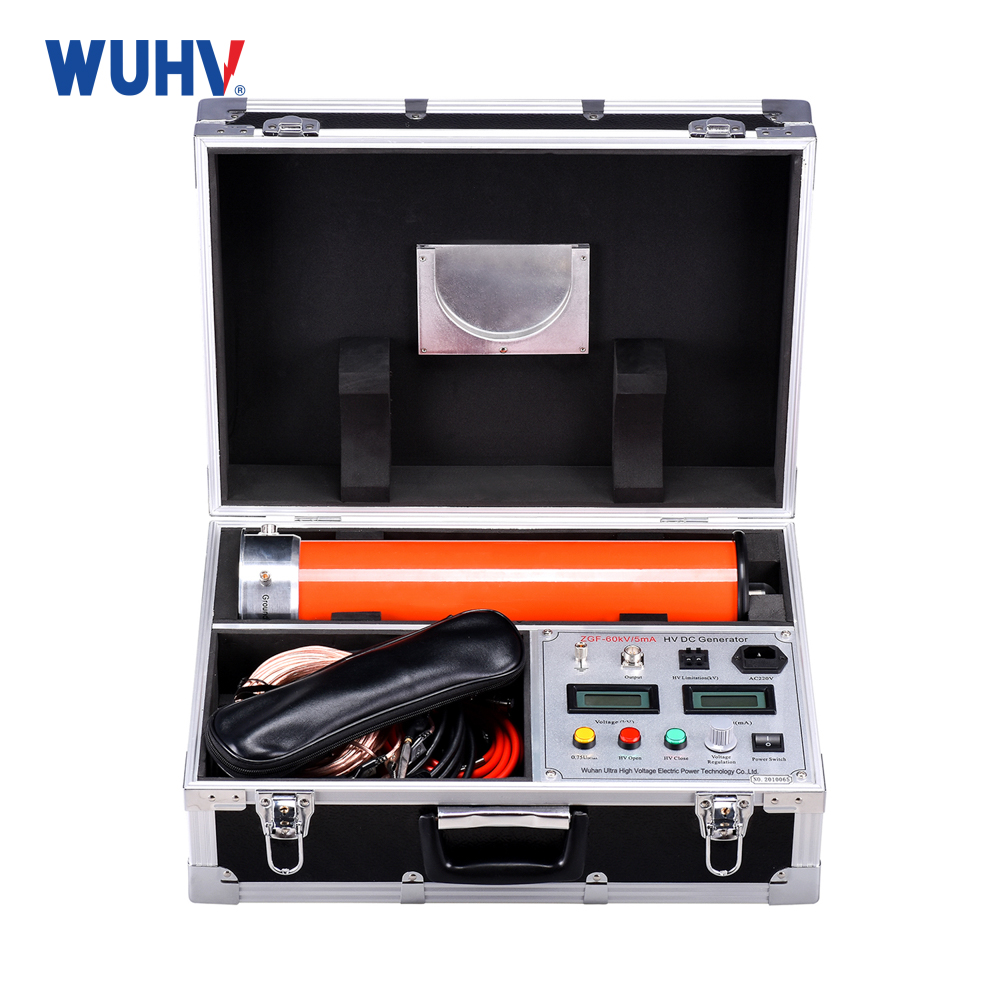The cable fault tester under UHV power can help many power workers conduct various power tests more conveniently.

Electrical workers use intelligent cable fault testers to test faults, which are very convenient and accurately located within one meter. No need to excavate the road surface multiple times, which can save a lot of manpower, material resources, and financial resources, while also saving maintenance costs. To help everyone better use the cable fault tester, here the editor will share some relevant suggestions with you.
After we receive the cable fault tester, it should perform a self check. Firstly, insert the headphones into the calibration device, turn on the power switch, and the power indicator light will turn on, indicating that it has entered the working state. When putting on the headphones and holding down the red terminal with your fingers, you should hear a buzzing sound inside the headphones, indicating that the device is working properly. Then insert the red and black detection lines into the measuring instrument.
Firstly, before the detection. We need to first understand the nature of the fault in the leakage circuit. If only the insulation rubber is damaged and leaks (discharges) to the ground but the circuit is not short circuited, conventional power transmission to the circuit can be used for detection when the circuit is disconnected.
If the circuit is short circuited and there is leakage to the ground or good insulation between the lines, and some short wire points are leaking to the ground, all the lines of the tested circuit, three or four lines, can be connected together and single-phase power can be transmitted to the circuit for detection
If the insulation to ground is good, single-phase point detection can be carried out for single short wire faults in the core.
Above the buried wire of the tested ground, the probe moves slowly from one end of the line to the other, and the earphones are basically silent on the section with good insulation to the ground. At the same time, the light emitting tube lights up or does not light up. As it approaches the fault point C, the sound gradually increases from small to large, and one light of the light emitting tube turns on to two or three lights. When it reaches the fault point A, the sound is at its maximum, and the light emitting tube is fully lit. When it crosses point A and reaches point B, the sound gradually decreases to disappear, and the light emitting tube is fully lit until it is completely extinguished. Then return to point A where the sound is the loudest, which is the fault point.
Attention: After detecting for a period of time, it is found that the indicator light is not very bright. Be sure to charge it before measuring. Otherwise, the battery level of the detector will greatly affect the detection accuracy. If there are too many leakage faults in the buried wire or if the buried wire cannot supply power to the ground, a signal transmitter can be added for detection.
When using a signal transmitter, the high-voltage line being tested should be disconnected from the high-voltage connection first. Then connect the red terminal of the signal transmitter to one or more of the grounding wires, and connect the black terminal to the ground wire (in the absence of a professional ground wire, the copper wire of the wire can be directly wrapped around a screwdriver, inserted into the ground, and in contact with the ground). Follow the above steps again to detect.
Normally, only the detector can be used for power on detection. After power on, the detector can directly detect where the voltage signal of the circuit is transmitted and where it is disconnected. But when it cannot be powered on, a signal transmitter can be used to send a pulse signal to the wire, which can be understood as connecting a power source to the wire and then continuing the detection.



















